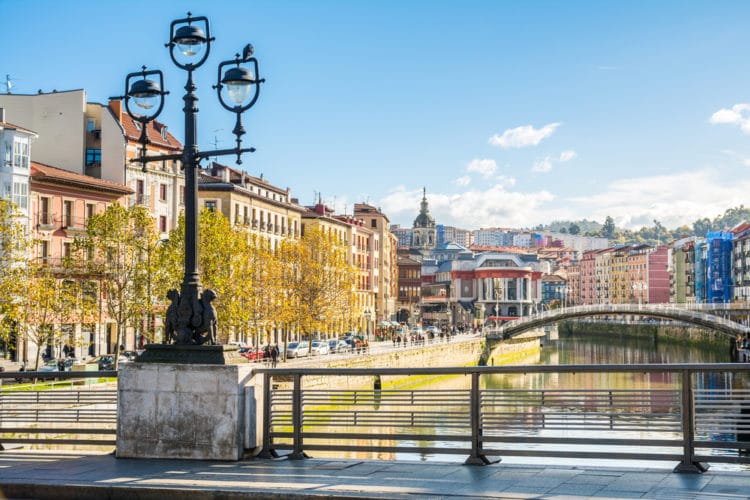The amazing ancient port city is called the unofficial capital of the Basque Country, possessing a unique appearance, unique architectural monuments, and industrial structures. The attractions of Bilbao reflect its 800-year history, mentality, and worldview of the Basques. The Nervion River divides the city into two parts, but the port city with a population of over 350 thousand people remains a single entity.
Old buildings are carefully preserved, museum exhibits are meticulously collected, and avant-garde architectural masterpieces, high-tech, deconstructivist, and abstract land houses-ship are erected. Global financial crises have slowed down the region’s economic development, and some promising commercial projects had to be abandoned due to a lack of funds.
This fact did not discourage the residents; on the contrary, the Basques saw the crisis as another opportunity for developing small businesses, tourism, trade, and reviving national crafts.
Guggenheim Museum
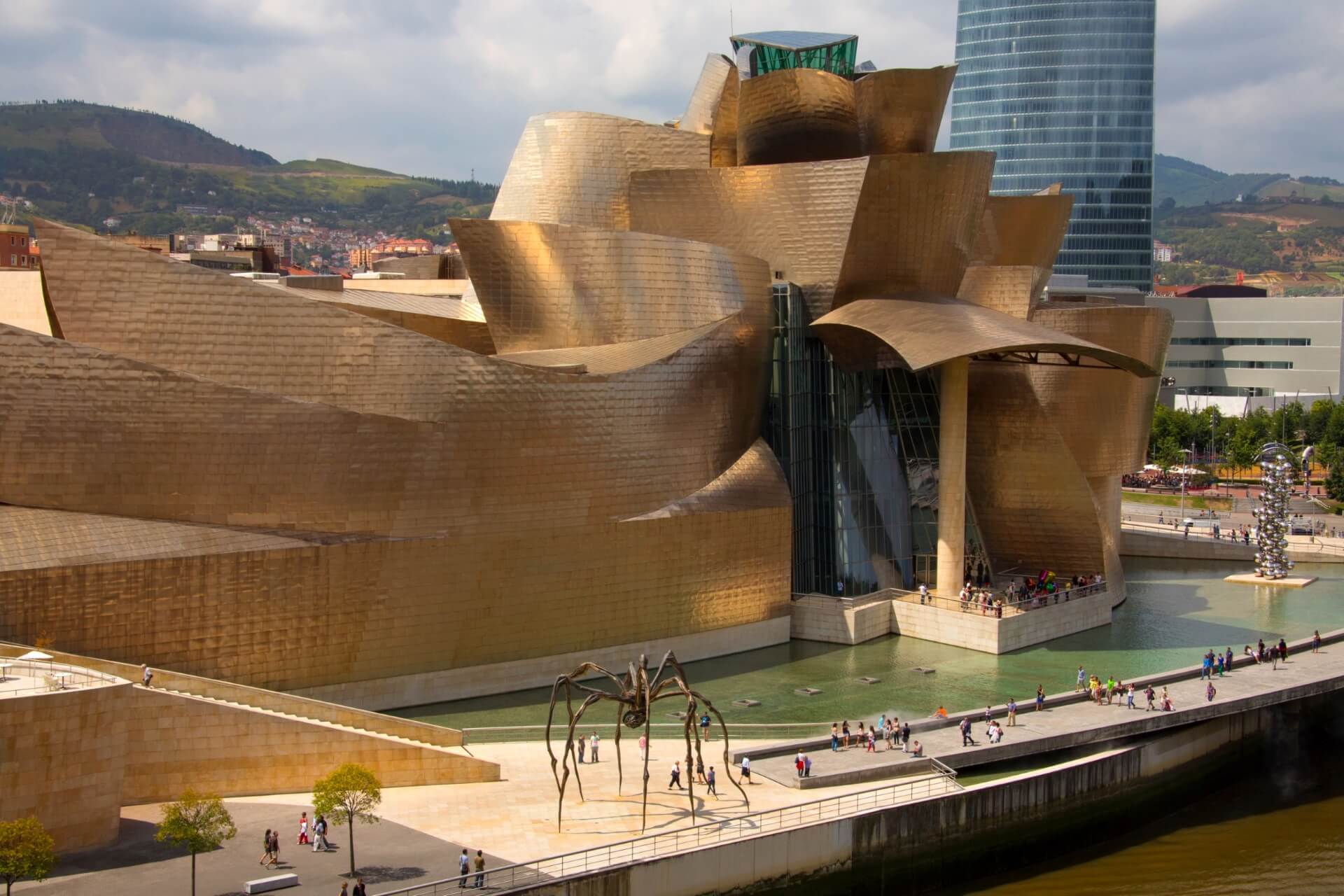
A branch of the American contemporary art museum founded by Solomon Guggenheim, a representative of the billionaire dynasty, resembles a fantastic ship capable of traversing oceanic and galactic expanses. Hundreds of thousands of Spanish subjects and tourists from all over the world visit the branch annually.
The deconstructivist-style building occupies 42,000 square meters, with 19 exhibition galleries, whose practical layout is also a kind of masterpiece. The heart of the museum is the 55-meter high atrium of glass and metal.
The main building materials are super-strong titanium, limestone, and glass. The construction of the American museum branch was repeatedly on the verge of cancellation due to the high cost of the project, public criticism, and bureaucratic obstacles. The work was completed in 1997. The Spanish royal family attended the opening ceremony, drawing special attention to the new object even among those who did not believe in the success of the grand initiative.
At any time of the day, the museum is a mesmerizing mystical sight. It has entered film history as the filming location for scenes from blockbusters such as “The World Is Not Enough” and “Men in Black.” For romantics, the building symbolizes love, acts contrary to common sense, and incredible success. The father of the founder of the American museum, Meyer Guggenheim, emigrated from Switzerland with his beloved woman and her seven children in the 19th century.
Solomon’s parents were denied permission to marry by the local community due to the poverty of the groom (an orphan) and the bride (a widow with many children). Thirty years later, the Guggenheims were among the wealthiest people in the New World. The dynasty’s representatives continued their parents’ philanthropic traditions and realized Meyer’s dream of building a museum in the Old World.
St. James Cathedral
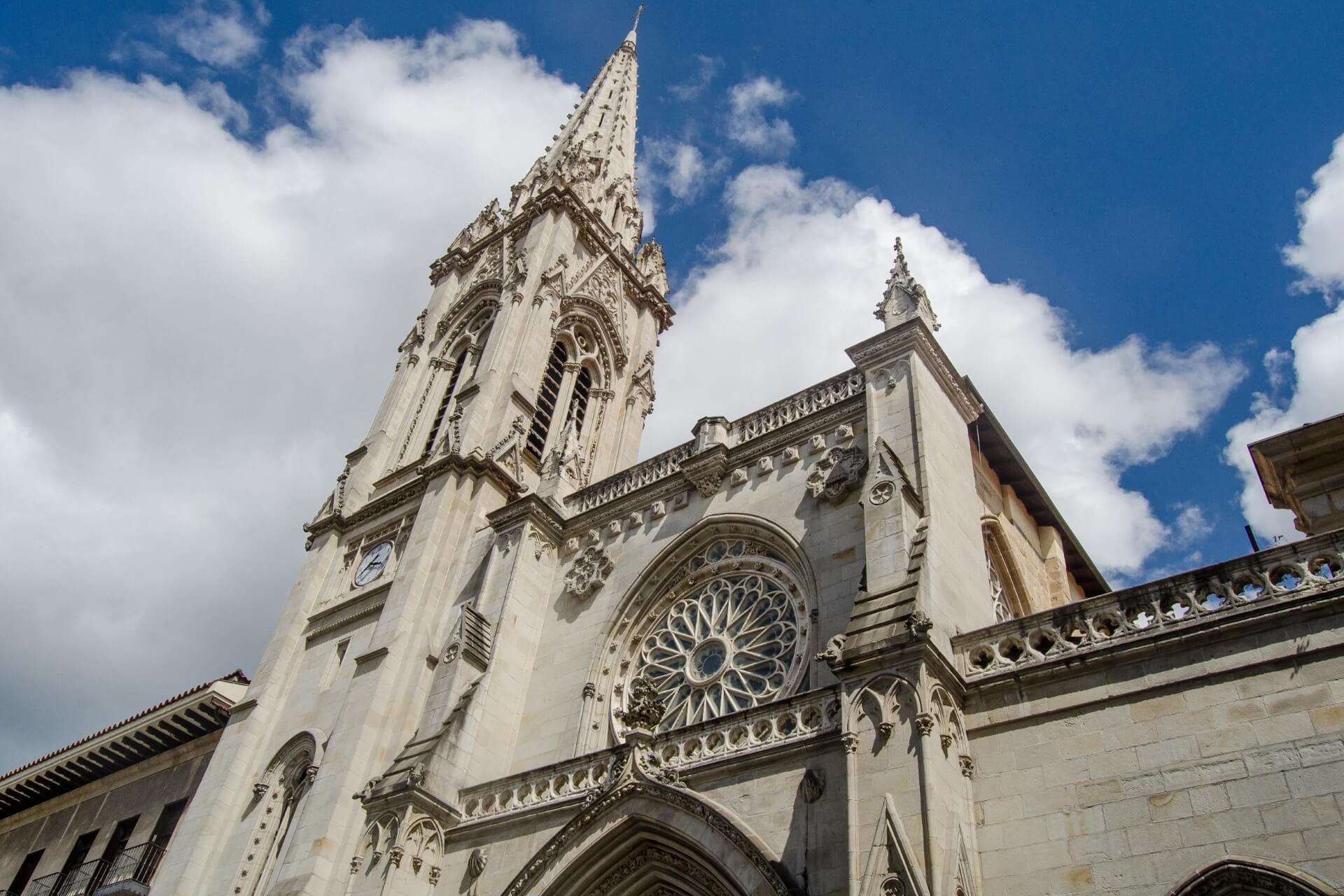
Art critics call the temple “the triumph of Gothic,” but the architecture also shows Renaissance solutions. The area of the “house of God” exceeds 1,100 square meters. The beginning of the temple’s construction, now open to tourists, is approximately dated to the 12th-13th centuries. In Catholicism, the honorary title of “minor basilica” indicates the special status of the cathedral.
It is recognized as a holy place of pilgrimage where believers, according to Catholic dogmas, receive complete forgiveness of sins, and priests are obliged to wear special vestments for conducting masses. The history of the unique building is connected with biblical events and legends about the deeds of the apostles, Christ’s disciples and followers. One of them, James, was killed in Jerusalem. According to church traditions, his relics miraculously appeared in the Spanish city of Santiago de Compostela centuries later.
The pilgrims’ path to the shrine passed through the fishing village now known as Bilbao. The locals warmly welcomed the travelers and built the cathedral in honor of the apostle. Bilbao and Santiago de Compostela were built several centuries after the temples in honor of James, one of the most revered saints in Spain and the patron of those who wish to forgive their enemies before death.
Campo Volantin Bridge
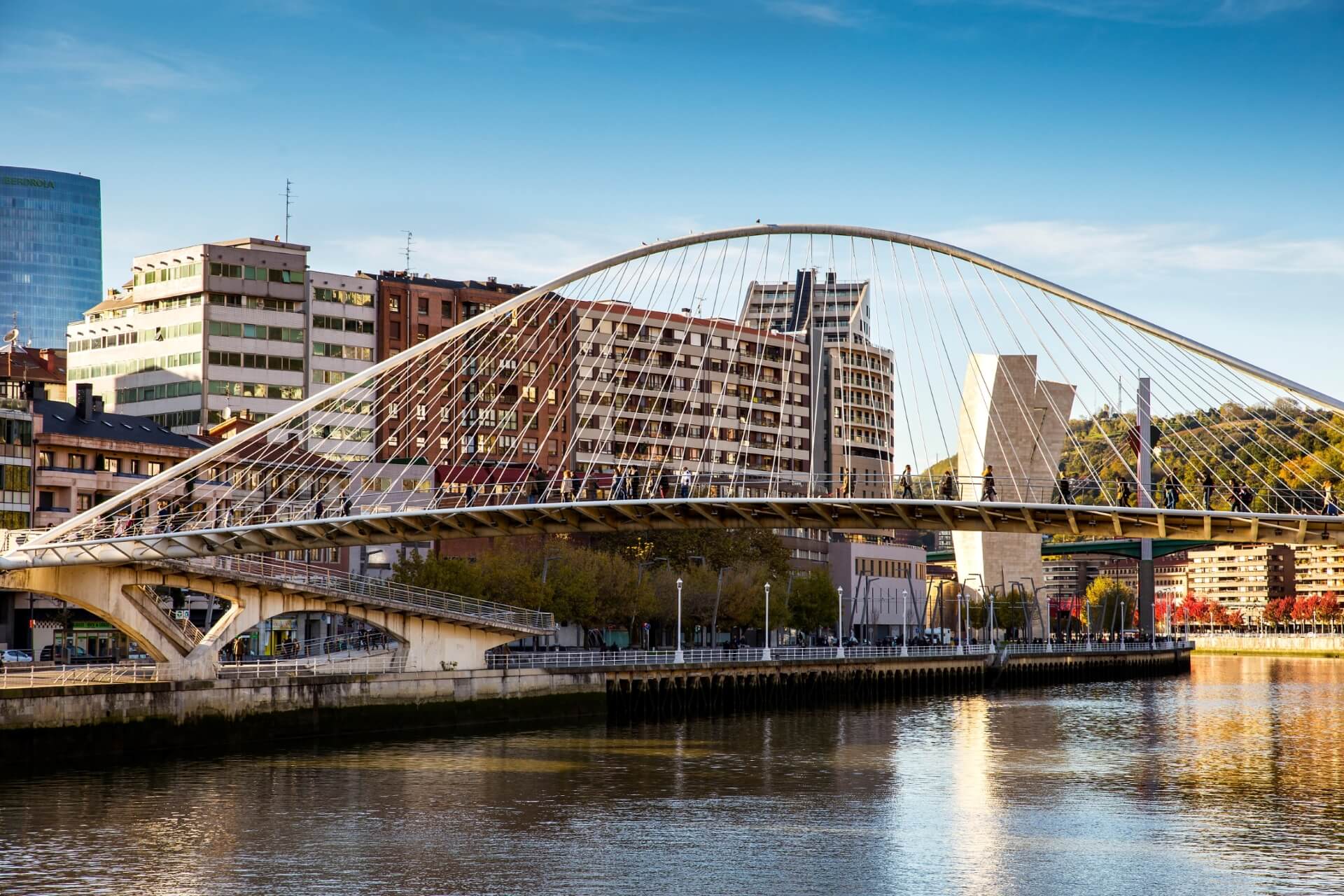
In guidebooks, the structure is often called an architectural marvel. Basques call it “Zubizuri,” which literally translates to “White Bridge.” The main materials of the futuristic structure are glass and steel. The bridge over the Nervion River belongs to the category of suspension arch structures. It was put into operation in 1997. The construction aimed to create a safe pedestrian zone from the hotel area to the Guggenheim Museum.
Zubizuri looks spectacular at any time of the day and is a favorite spot for selfies, romantic dates, and film shoots. The impracticality of the bridge constantly draws jokes and criticism from residents and city authorities. Significant sums are required annually for the structure’s maintenance, one of the expenses being the replacement of glass tiles that break due to increased mechanical stress.
Tourists take the shards as souvenirs, and city funds are again spent on repairing damaged sections of the structure. In rain and wet weather, crossing the bridge is quite dangerous due to its famous slippery surface.
Plaza Nueva

The cozy square is designed according to the canons of neoclassicism. Its shape is an ideally measured rectangle. The construction and arrangement of one of the city’s coziest spots lasted over half a century. Columns dominate the architectural elements of the “New Square” (as its name literally translates). Small bars, cafes, and restaurants are located between them. Basque music plays in the establishments, and the menu features traditional festive and everyday dishes of the proud people.
“Plaza Nueva” opened in the mid-19th century. Symbolically, its main building is the palace housing the Basque Language Academy. The square is a hallmark of the old part of the city. Markets operate on its territory on Sundays. Here, one can buy antiques, local crafts, books, and coins at reasonable prices.
Vizcaya Bridge
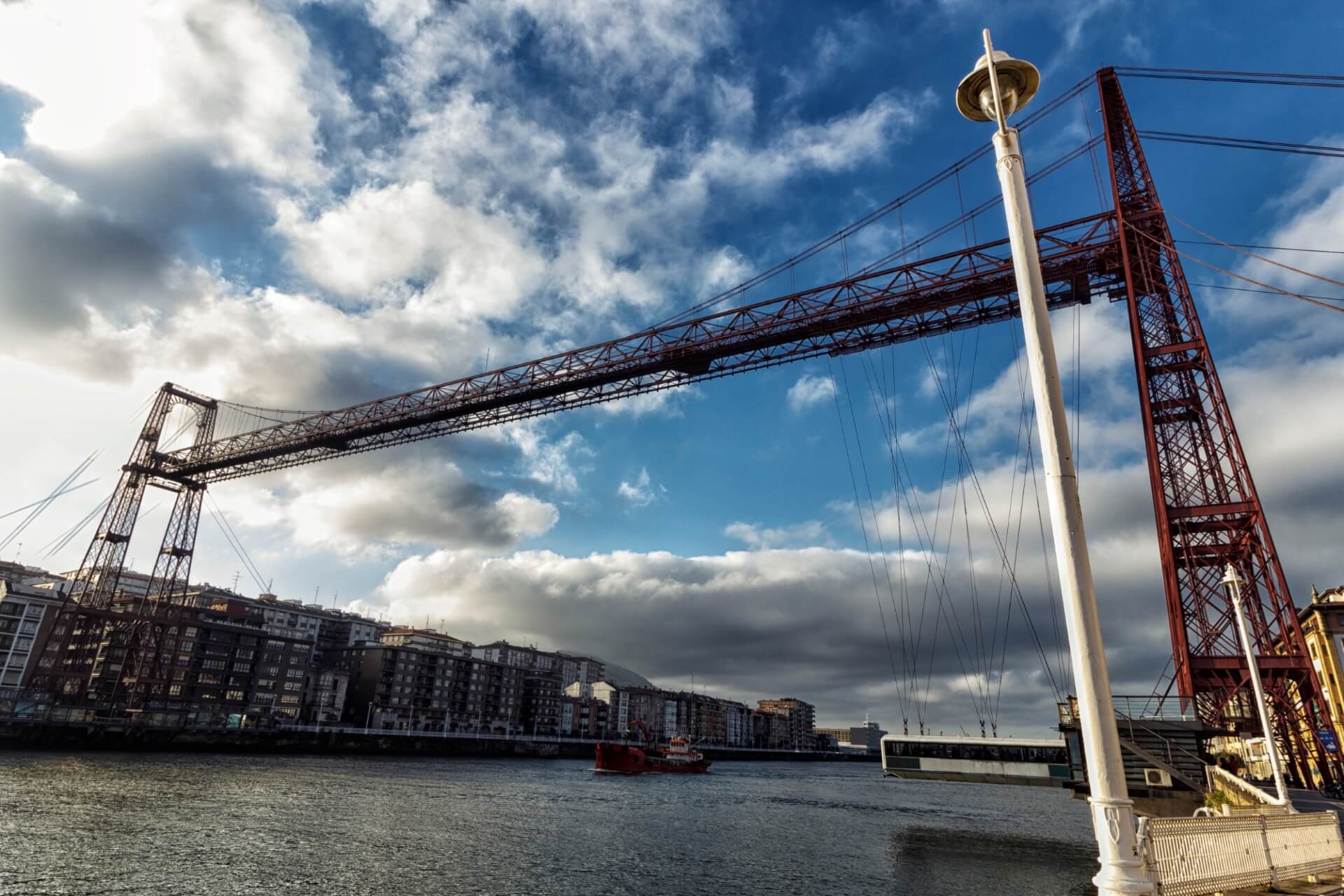
The “Flying Ferry,” “transporter bridge,” “fluttering bridge” are names of one unique object. It lacks an original stylistic solution and exquisite decorative elements. However, the oldest transporter bridge in Europe is recognized as a popular attraction and a monument of late 19th-century architecture.
The Vizcaya “flying ferry” became a model for emulation in both the Old and New Worlds. The object is fully functional in the 21st century. The bridge only stopped operating during the Spanish Civil War. After the fighting, it was repaired and continues to delight height lovers. The central span of the bridge (over 160 meters long) hangs on metal cables at a height of 45 meters.
Every 8 minutes, a gondola with passengers and cars “sets sail.” The journey from one bank to the other takes 1.5 minutes. After reconstruction, double 61-meter support towers on the Nervion River banks house elevators, and parts of the platform at a height of 50 meters have become super-popular observation decks for locals and tourists.
Basque Museum
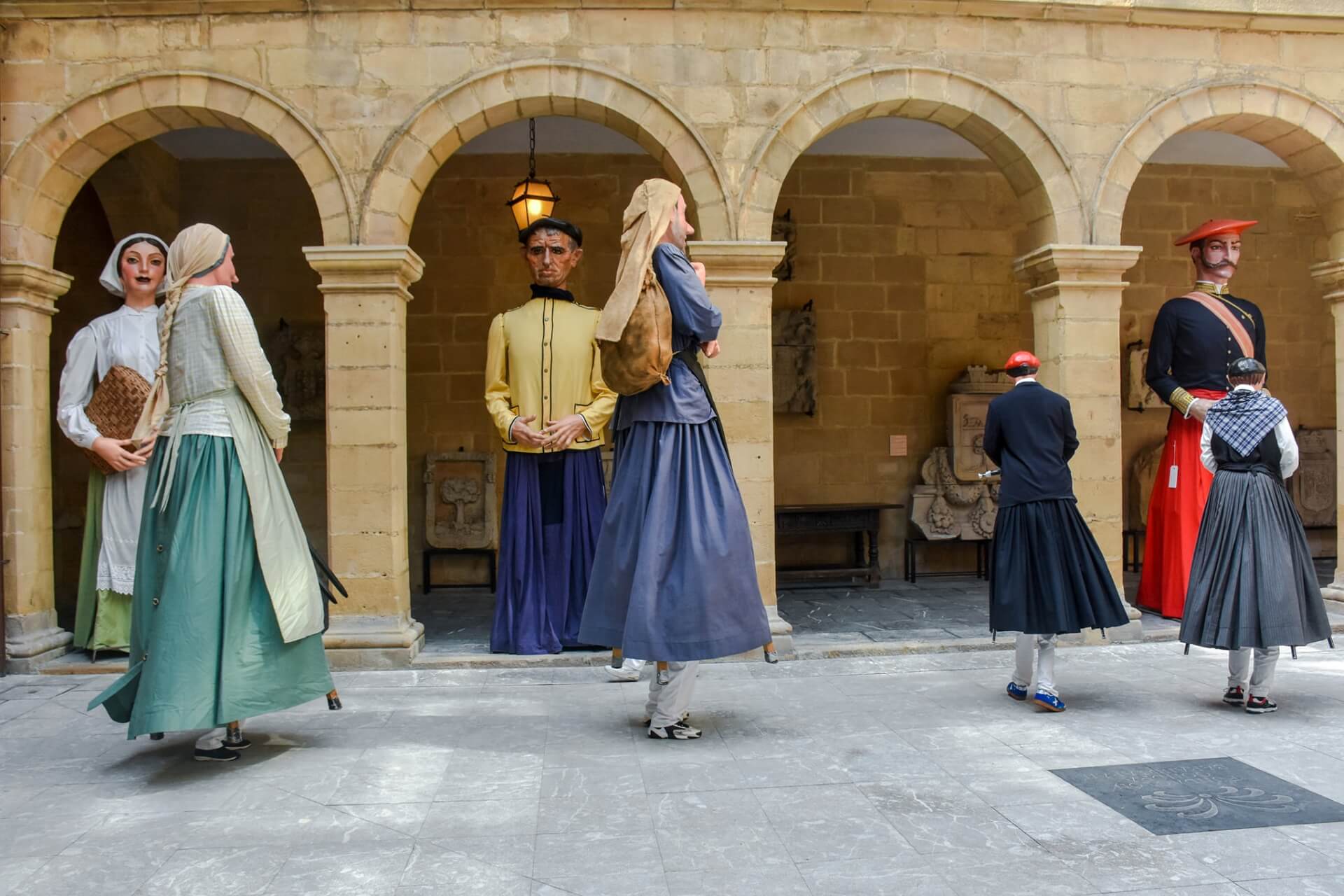
The history of the remarkable people living in northern Spain and neighboring French provinces holds many mysteries. Where did the ancestors of modern Basques come from? Why are their language, traditions, and customs unlike European ones? There is a hypothesis that Basques are direct descendants of the Atlanteans. Skeptics find it hard to believe, but in the 5th century BC, the locals possessed unique stone processing technologies, defensive structures, and shipbuilding skills.
The museum’s opening in the first quarter of the 20th century sparked a renewed interest in Basque history. It all started with a small municipal cultural center. The city authorities provided enthusiasts with the Jesuit school’s buildings (also known as a college in some sources) and the adjacent church, built in the 17th century.
The museum collection has no analogs in the world. Weapons, family crests, women’s jewelry, furniture, ceramic dishes, tools, clothing of rural and urban residents, handwritten books, manuscripts, restored fragments of ancient dwellings and ships – many exhibits exist in single copies. According to official data, the number of items in the collection exceeds 200,000.
Church of St. Anthony
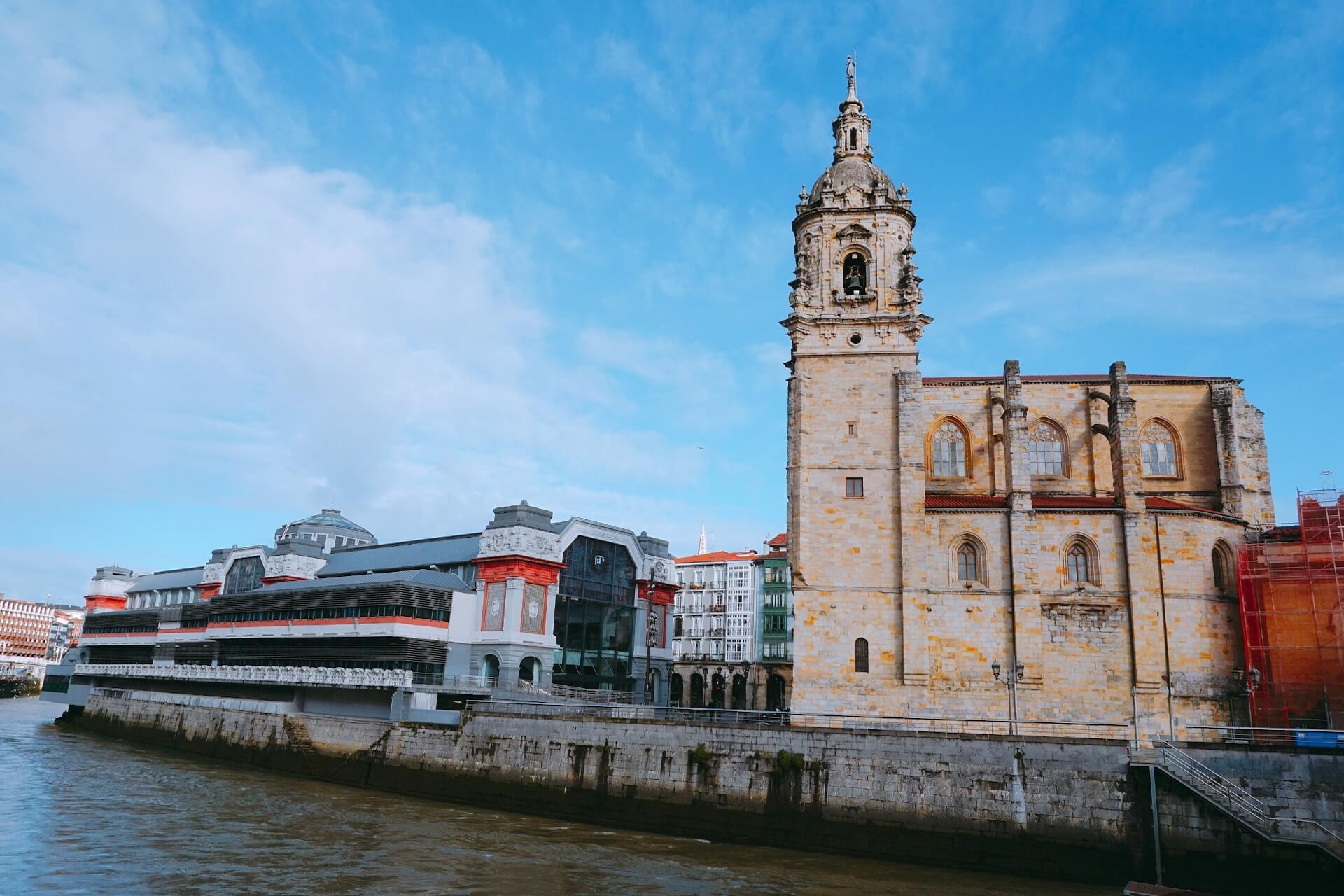
The church is located near the river’s mouth and the eponymous bridge. The church’s image is on the city’s coat of arms. The construction and consecration of the Gothic building are approximately dated to the 15th century, but the facade is designed exclusively in Renaissance style. Three hundred years later, a Baroque-style bell tower was built next to the church, completing the temple complex.
Once upon a time, there were a stock exchange, royal palace, and part of a wall protecting the area during floods on the site of these buildings. Historical documents and preserved foundation fragments testify to past structures. The building did not immediately acquire its modern appearance; it was often expanded and renovated. The church houses statues of Christ, St. Anthony, images of the Virgin Mary, and sculptures of the apostles Peter and Paul, created in the 15th-17th centuries.
The organ, installed in the early 20th century, is still in use today. Among the church relics, paintings, and statues of the 20th century occupy a worthy place. They emphasize the unique atmosphere of the ancient structure and remind us of timeless existential questions. St. Anthony is considered the heavenly patron of travelers, shepherds, and newlyweds. In Catholicism, he is revered as a Doctor of the Church, whose mercy and meekness have become proverbial. The church in honor of the apostle is called one of the city’s main shrines.
Basilica of Our Lady of Begoña
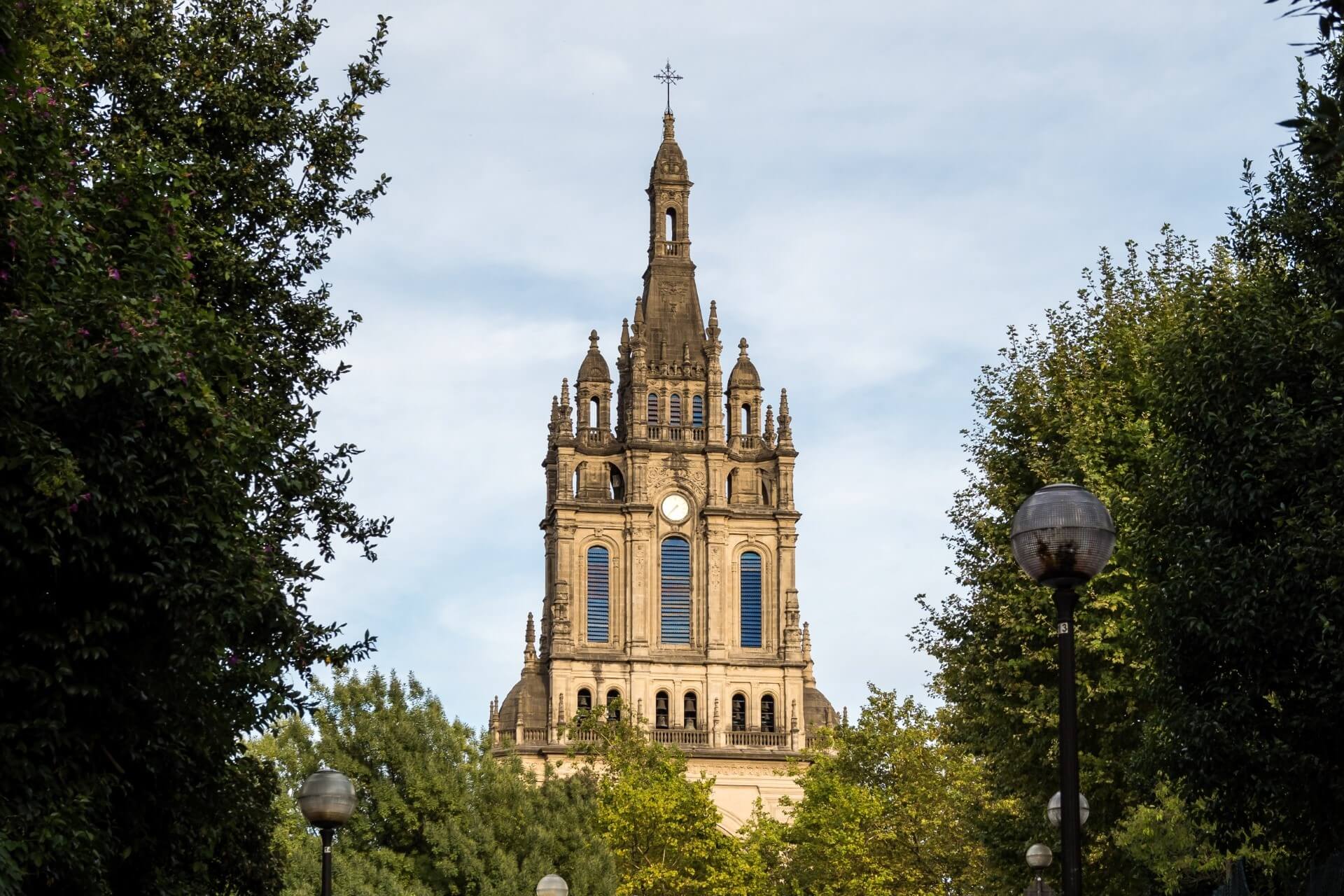
The Virgin Mary is revered as the patroness of sailors. The Basques always sought to build churches dedicated to her in every coastal settlement. Bilbao is no exception. The building’s architecture intertwines Gothic and Renaissance styles. The basilica’s construction was consecrated in the 16th century. The interior decoration of the temple is distinguished by its austerity. The basilica’s heart is the altar, shining with gilding, and a wooden statue of the Virgin Mary.
Pilgrims from different parts of Spain hurry daily to her, hoping for miraculous help, healing, and forgiveness of sins. For Catholics whose lives are connected with the fleet, fishing, and water travel, this is a special place. The construction of the temple lasted over 100 years. Later, changes were made to its architecture.
The bell tower was built in the 19th century, and 100 years later, the facade was restored, and some bells were replaced. The basilica has survived robberies, fires, and bombings, but masses continued even during the Spanish Civil War. Sailors consider the number 7 lucky. The updated temple’s bells ring out exactly that many melodies.
Alhóndiga
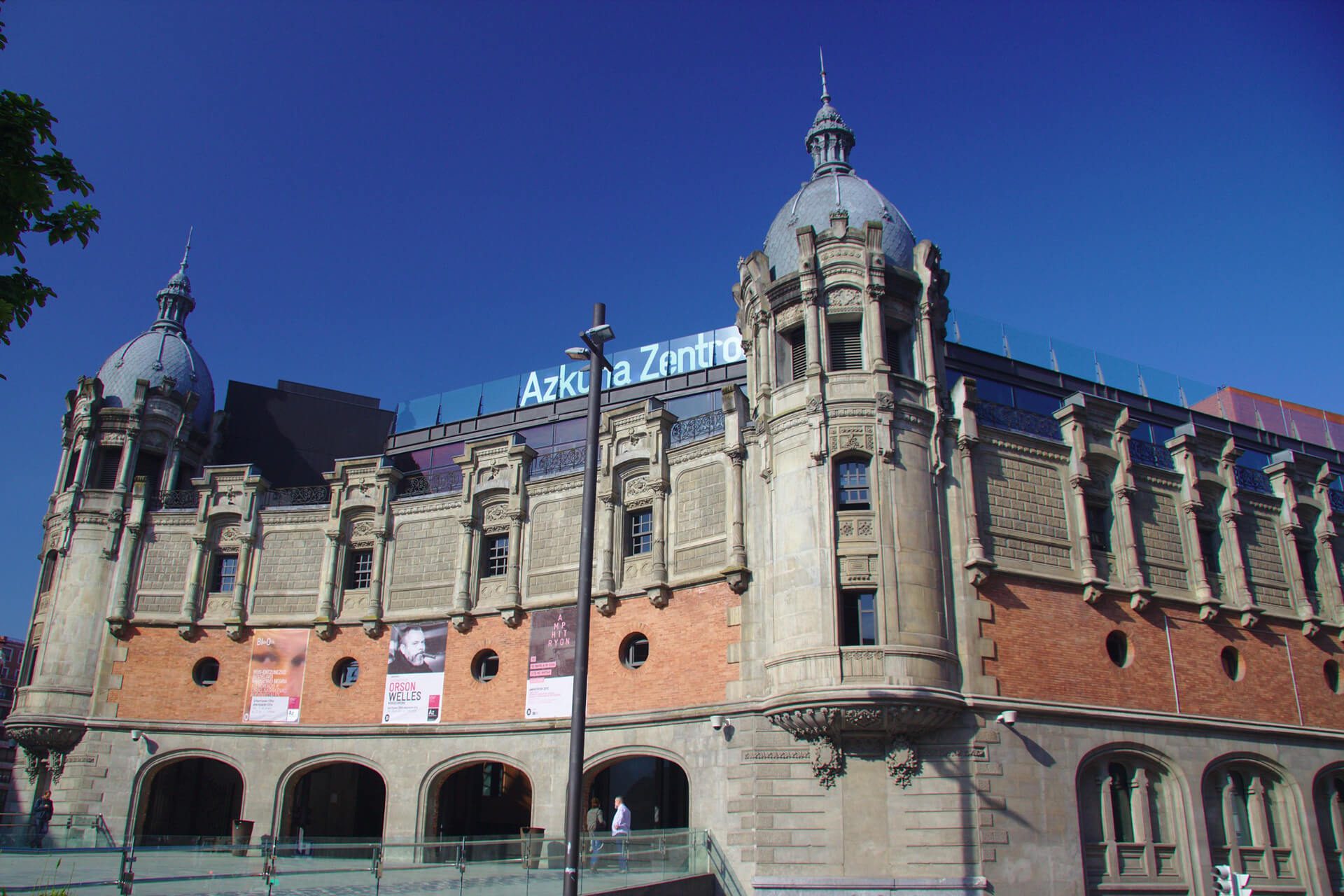
Is it possible to turn an old building into a luxurious entertainment complex while preserving its unique architecture? “Alhóndiga” answers this question, which the Basques do not consider rhetorical. Here you can spend the whole day forgetting about everything and not notice how time flies.
The luxurious building was constructed in the early 19th century to store wine, barrels, and other containers. Seventy years later, its area was insufficient for the warehouse’s full functioning, and there was a question of demolishing the building. The structure was saved by its unique architecture, making the warehouse look like a castle or cathedral. Restoration work preserved the historical facade and original interior layout.
Today, restaurants, bars, and exhibition galleries are located in the building. The complex, which has been operating since 1999, also houses a library and auditorium. The visitors’ favorite spot is the roof, with a pool with a glass floor. An essential part of the building’s interior is 43 wonder columns. Each is unlike the others and simultaneously part of a single stylistic solution.
Museum of Fine Arts
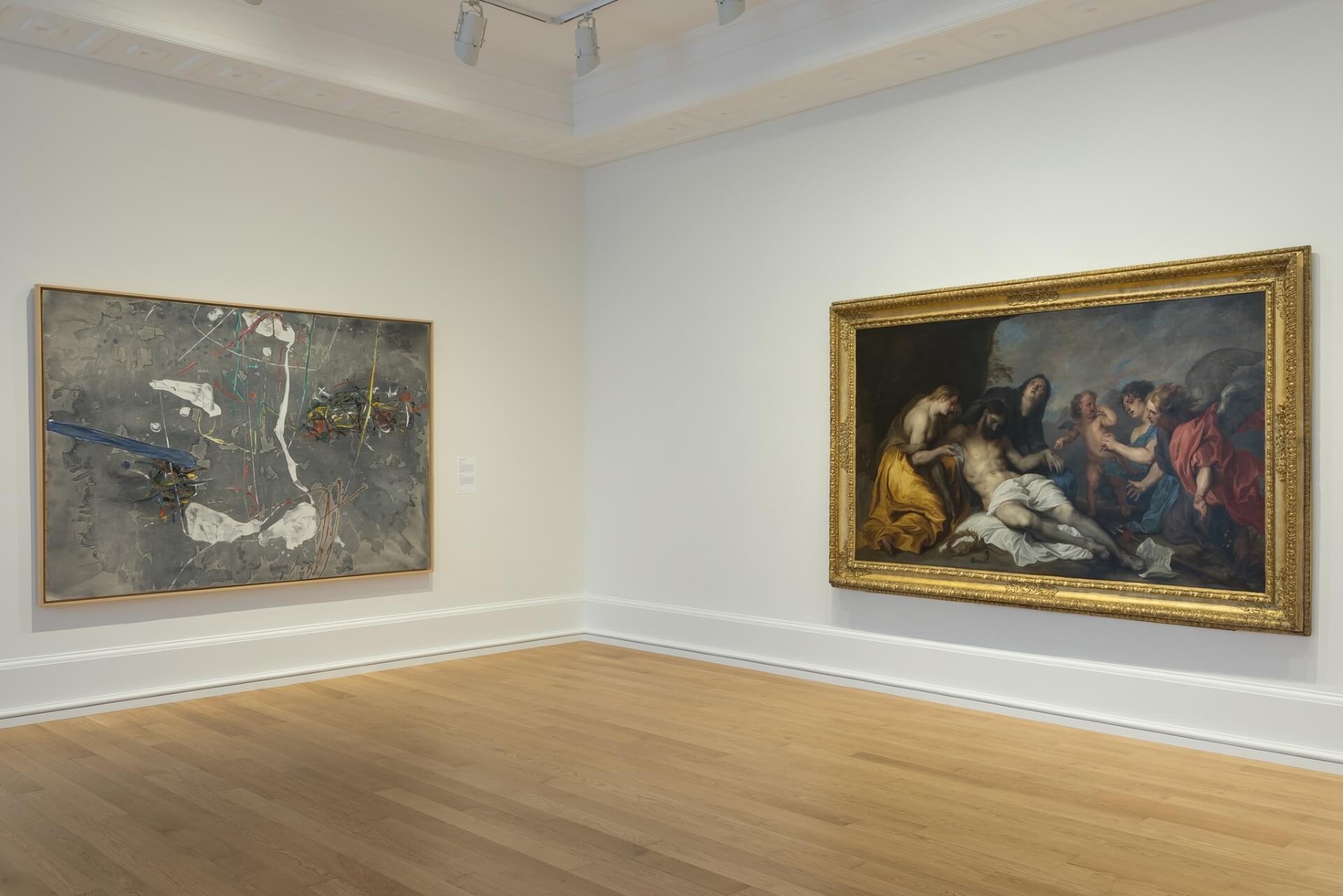
The Basques jokingly and seriously call the city a paradise for muses’ servants. The Museum of Fine Arts has a collection of unique classical and contemporary works. It is currently increasing with new sections, including one dedicated to ancient Etruscan art.
The main exhibitions are always arranged chronologically. In spacious halls, you can see works by Gauguin, Murillo, Serusier, Coello, Zurbaran, Chillida… One of the three main exhibition departments is dedicated exclusively to Basque artists, sculptors, and applied art masters.
By European standards, the museum is young. In 2008, the building turned 100 years old. Successful reconstruction increased the visitor rest area, added new exhibition spaces, and new halls for film screenings and presentations. The remodeling improved the conditions for storing the museum’s collections.
Euskalduna Palace
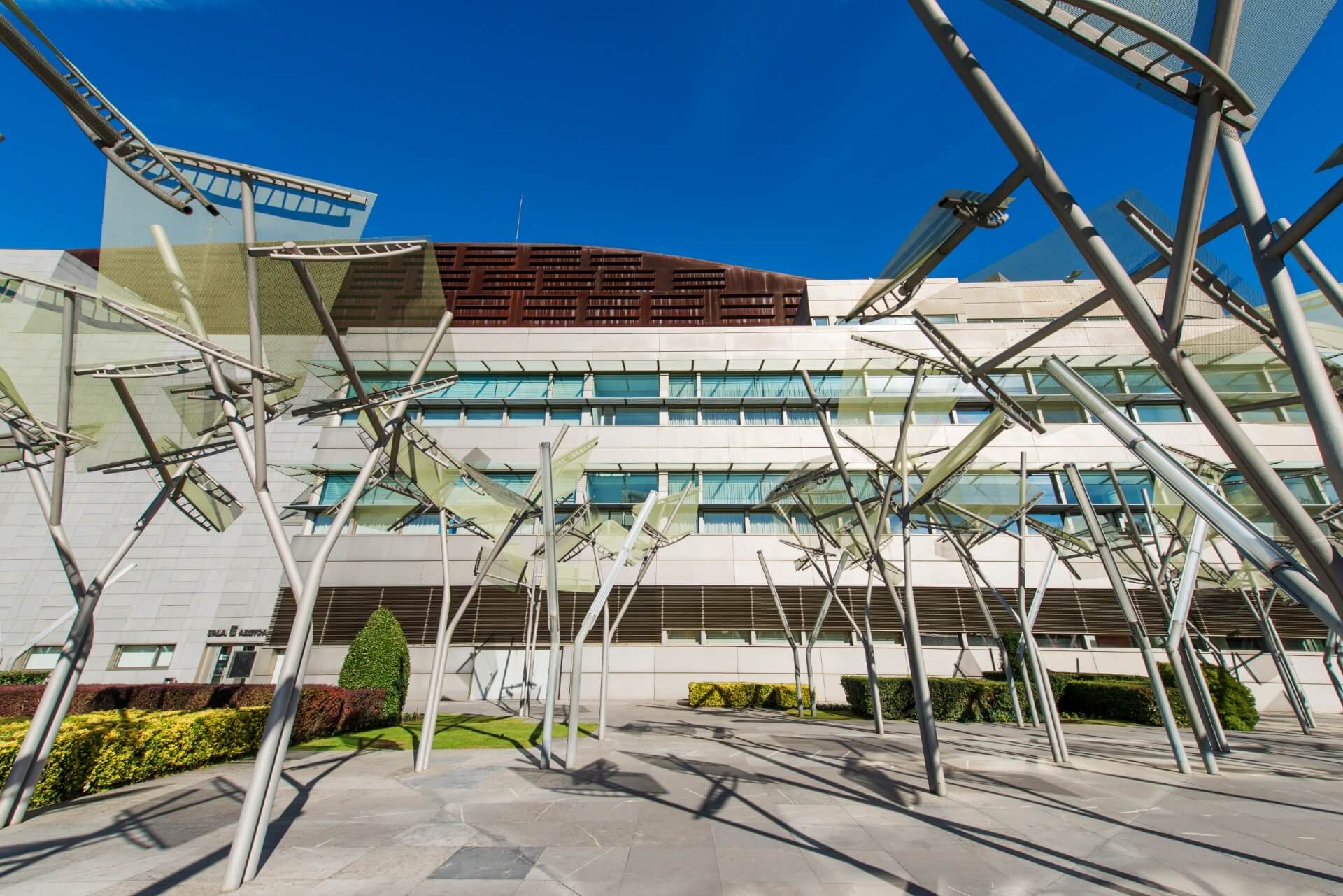
The building erected at the end of the 20th century resembles a ship, symbolizing the city’s architecture. The palace is a popular concert venue, a favorite place for locals to relax, a conference center, and a building where the city parliament meets. Architectural and planning solutions allowed various establishments to be located on one object’s territory without causing visitors to feel disharmony.
The building, with a total area of 25,000 square meters, houses a shopping gallery, restaurants, concert and exhibition halls. The palace height exceeds 50 meters. It evokes nostalgia among the Basques for the good old days when shipyards brought income to the city.
Moyúa Square
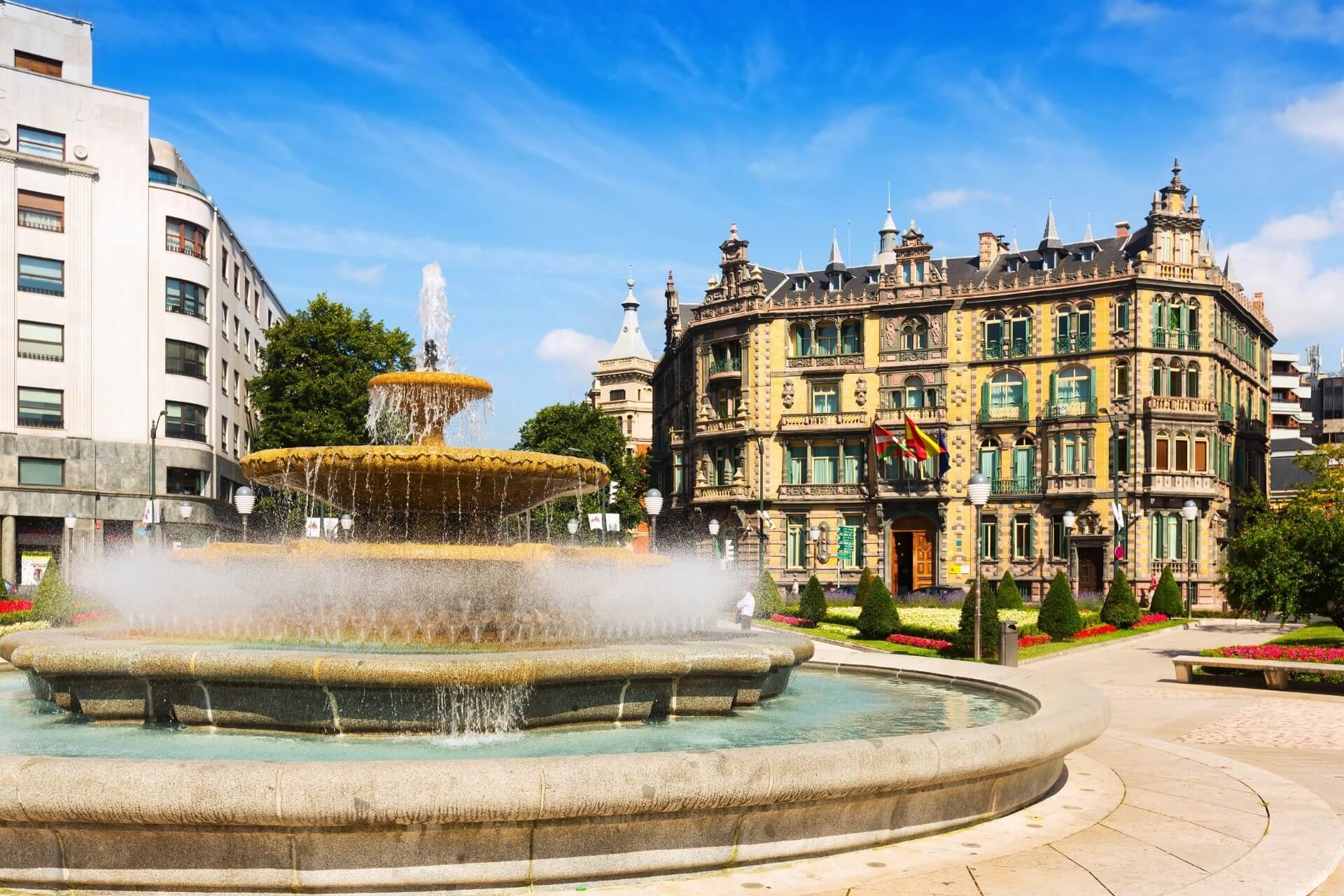
Foreign tourists and locals shorten its name to Moyúa Square. Its traditional European layout only emphasizes the splendor of neighboring buildings. The square is visited to admire the flowers, alleys, and unusual fountain. Next to it is the “Carlton” hotel, whose unique architecture impresses with its harmonious combination of aristocracy and luxury. The building’s history is associated with the names of great scientists, writers, artists, and composers who stayed there.
Doña Casilda de Iturrizar Park
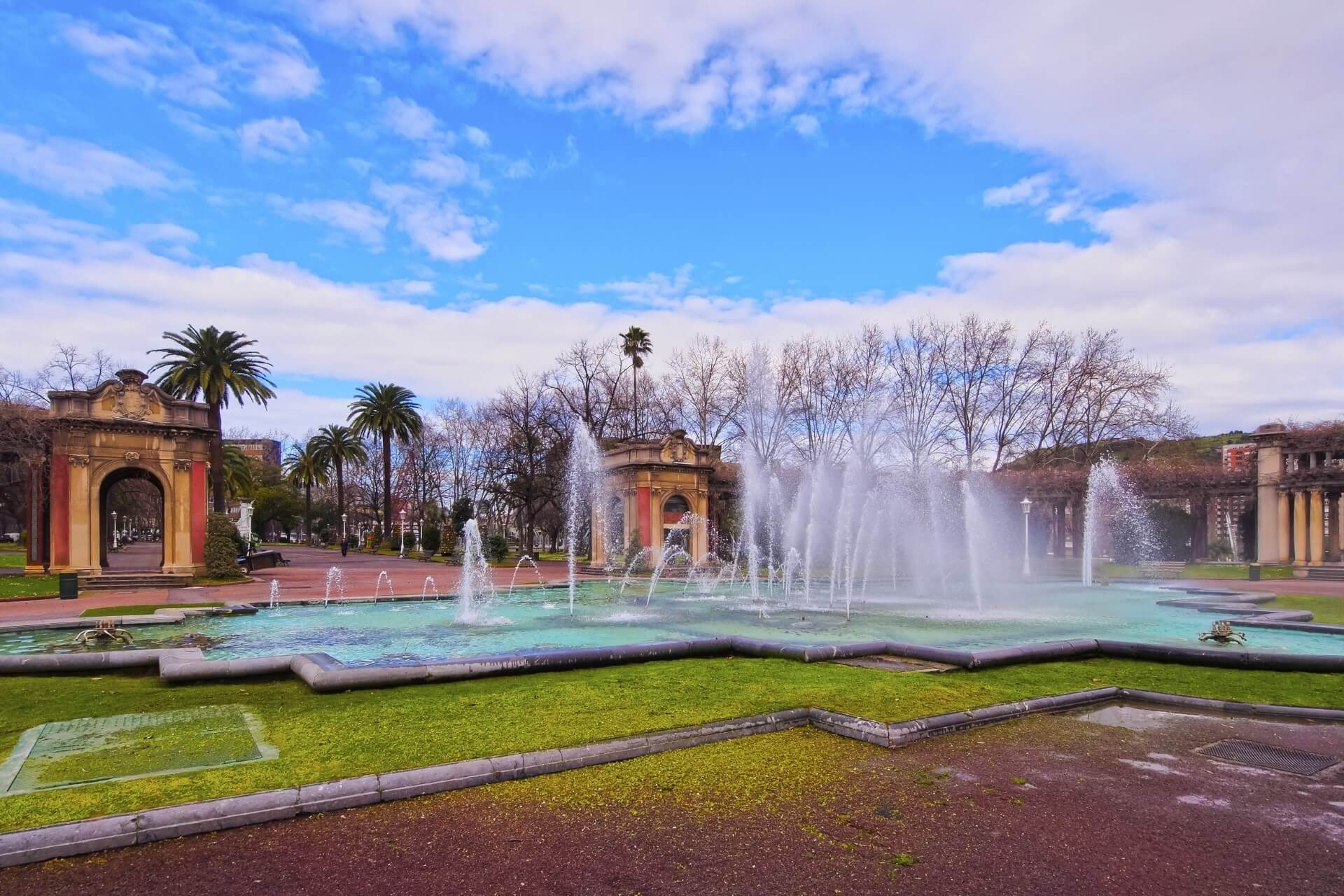
One of the city’s most beautiful recreational areas dates back to 1920. The park covers about 9 hectares. Its landscape solutions can be called traditional, fully complying with English canons. Neat lawns, benches, a pond where you can feed ducks and swans are “classics of the genre.” Singing fountains, peacocks walking along the alleys, small cafes, and a carousel with horses enhance the cozy old-time feeling.
Separate areas for mass events and family picnics are provided to avoid disturbing other visitors’ peaceful, leisurely relaxation. The land was donated to the beloved city by an extraordinary woman whose name the park bears. In memory of Doña Casilda, a bronze bust is installed next to the main fountain as a sign of respect and gratitude.
Maritime Museum
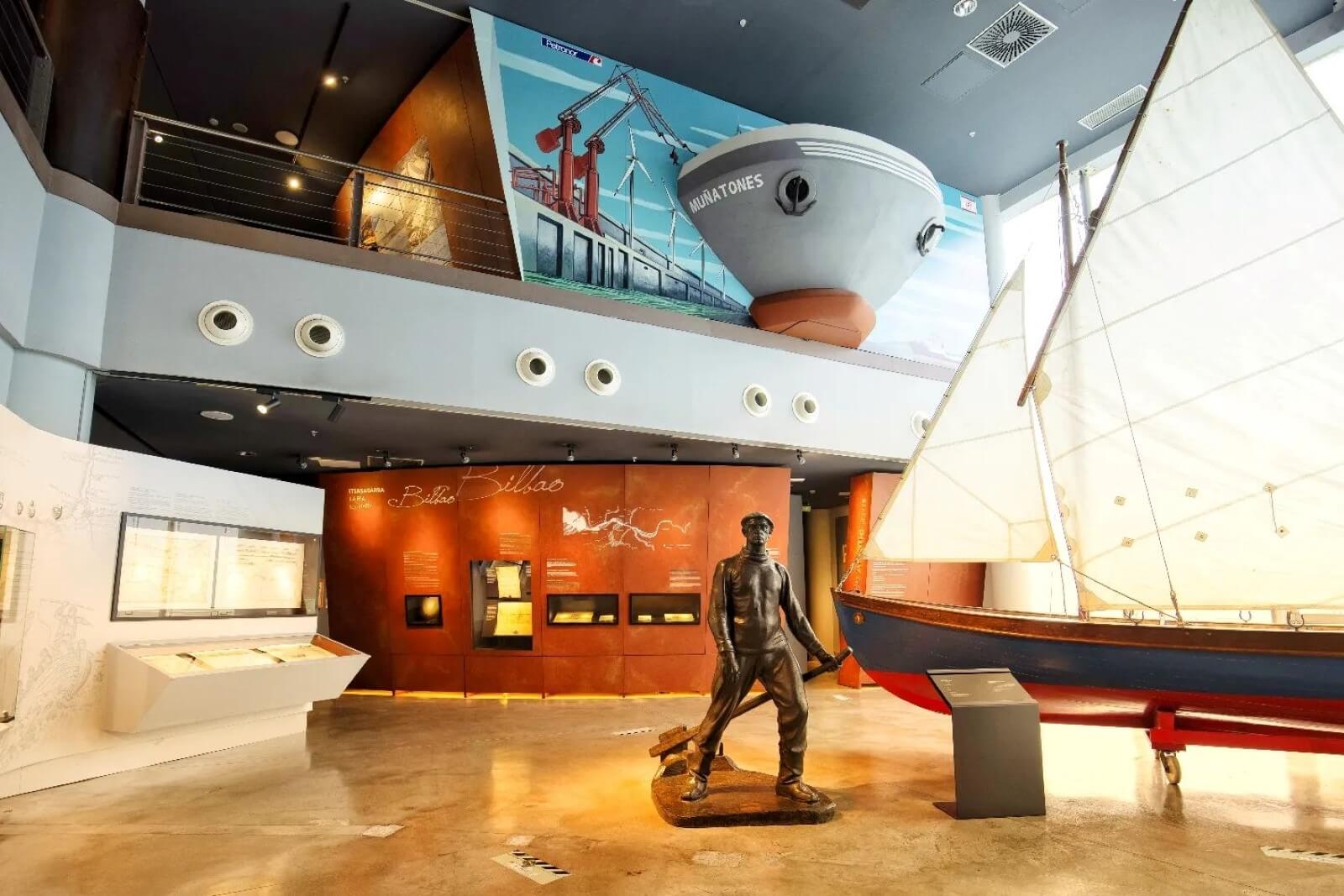
Before 1984, the “Euskalduna” shipyard was located on the museum’s site. It was closed when the region’s ship repair industry declined. The Basques’ special attitude towards their history gave new life to the abandoned port buildings. The shipyard turned into a museum with a total exhibition area of 27,000 square meters. Unique exhibits are displayed outdoors and in a new building. The museum layout includes three thematic sections.
The first one provides information about the nature and geological structure of the Bay of Biscay, the second about the history of northern Spain’s economic development. The third section is dedicated to shipbuilding and ship repair technologies. The museum staff conducts active research. One result is the restored consular felucca.
A popular exhibit among tourists and locals is a precise copy of an ancient ship of Basque envoys. The felucca’s wooden decorative elements are recreated from old engravings. Its luxurious decoration is striking. However, one should not forget that these maneuverable ships posed a serious threat to large vessels. Cannons were installed on the feluccas. The sailors were always ready for battle.
La Ribera Market

The market’s history began long before 1929, the official construction date. Eight hundred years ago, trading rows were located here. Fairs were popular with Spanish and French merchants. Today, the three-story covered La Ribera market occupies 10,000 square meters. Its shape resembles a palace-ship. The impression of solemnity is enhanced by bright stained glass windows.
Only fresh products are sold at its counters: fish, meat, greens, vegetables, and fruits. The restaurant and numerous gastro bars offer traditional Basque cuisine. Jazz concerts at La Ribera are incredibly popular with fans of the genre. The market simultaneously serves as a leisure center, offering culinary shows, master classes from leading chefs, and tastings.
Artxanda Funicular
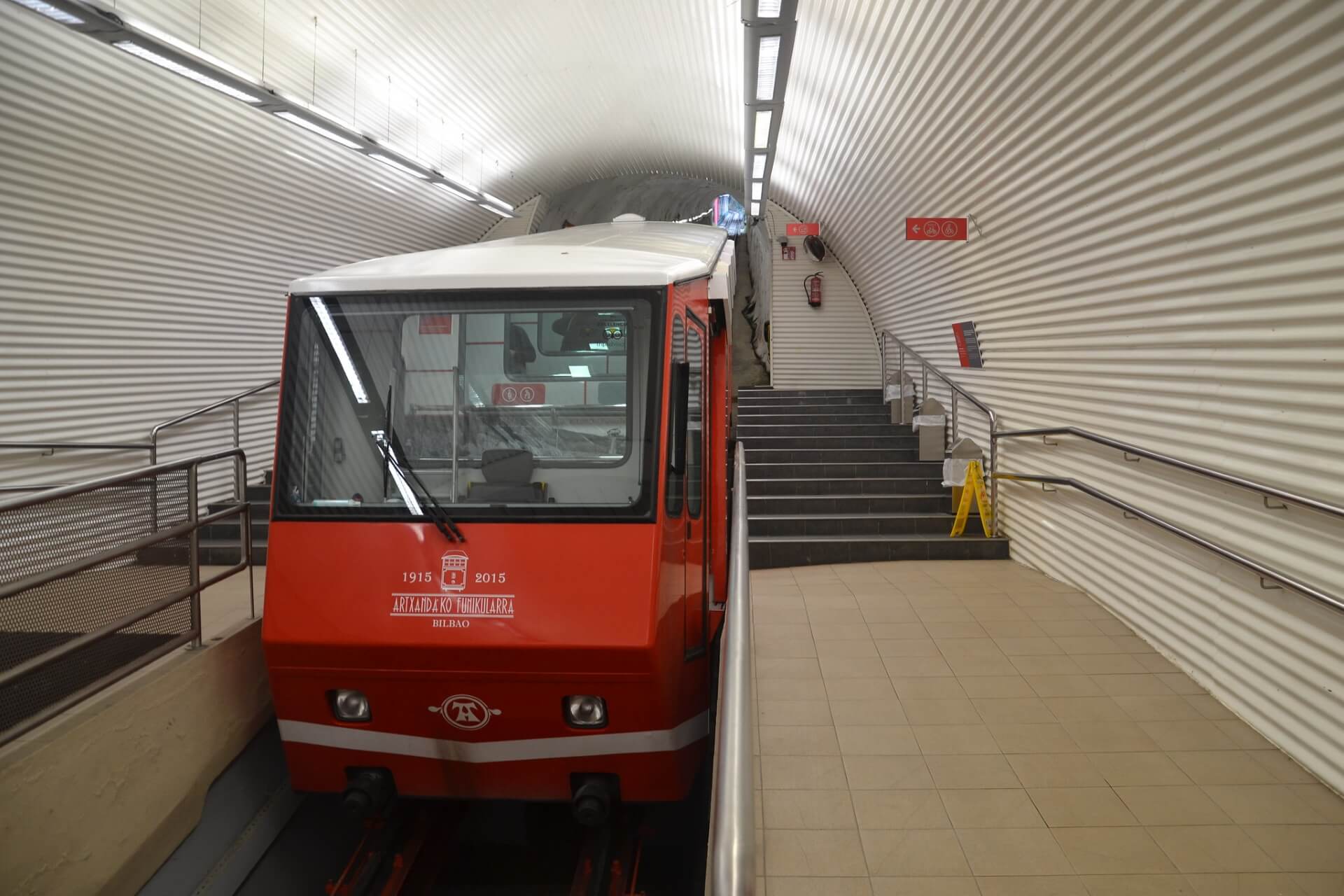
To reach the top of the mountain of the same name by cable car on the funicular, it takes 3 minutes. The view from the observation deck is stunning. About 600 thousand people visit this beautiful place annually for it. The mountain hosts a unique park, an elite hotel, a sports complex, a golf club, and several restaurants. The funicular has been operating since 1915, only stopping during the Spanish Civil War.
Arriaga Theater

Arriaga’s works resonate with Mozart’s masterpieces. The young Basque, in some ways, repeated the fate of his idol. He was born on the day the Austrian colleague could have celebrated his 50th birthday. Sacred music, symphonies, cantatas, operas – everything by Juan Arriaga is imbued with the triumph of harmony, lightness, and bright sadness. The composer seemed to foresee that he had little time left. Arriaga did not live to see his 20th birthday.
The Basques immortalized the talented compatriot’s memory in the name of the opera house, built at the end of the 19th century. The building, created according to the canons of Neo-Baroque, resembles Parisian theaters, where the young composer dreamed of staging operas.
San Mamés Stadium
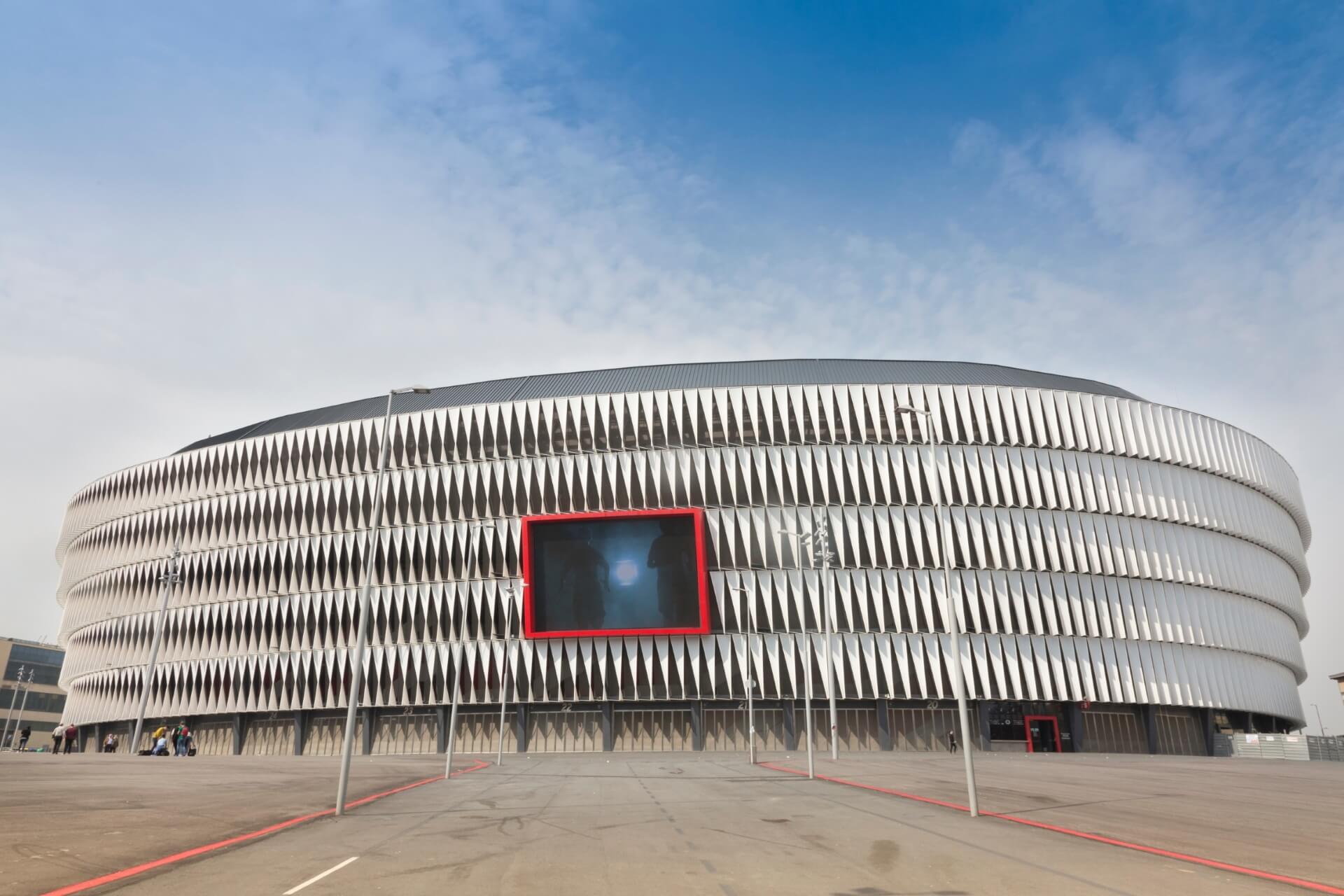
The old football stadium of the same name existed in the city for about 100 years. It got its name from the nearby church. The new (also eponymous) sports object was built in 3 years and opened in 2013. The main building materials are super-strong metal and glass. They form a “scaly structure” that shines in the night like a giant fairy lamp.
Over 53 thousand people can simultaneously be on the stadium’s territory. It remains the home arena of Athletic Bilbao, whose museum occupies three floors of the “San Mamés” sports complex. Experts recognize the new stadium as one of the best such structures in the world.
Church of St. Nicholas
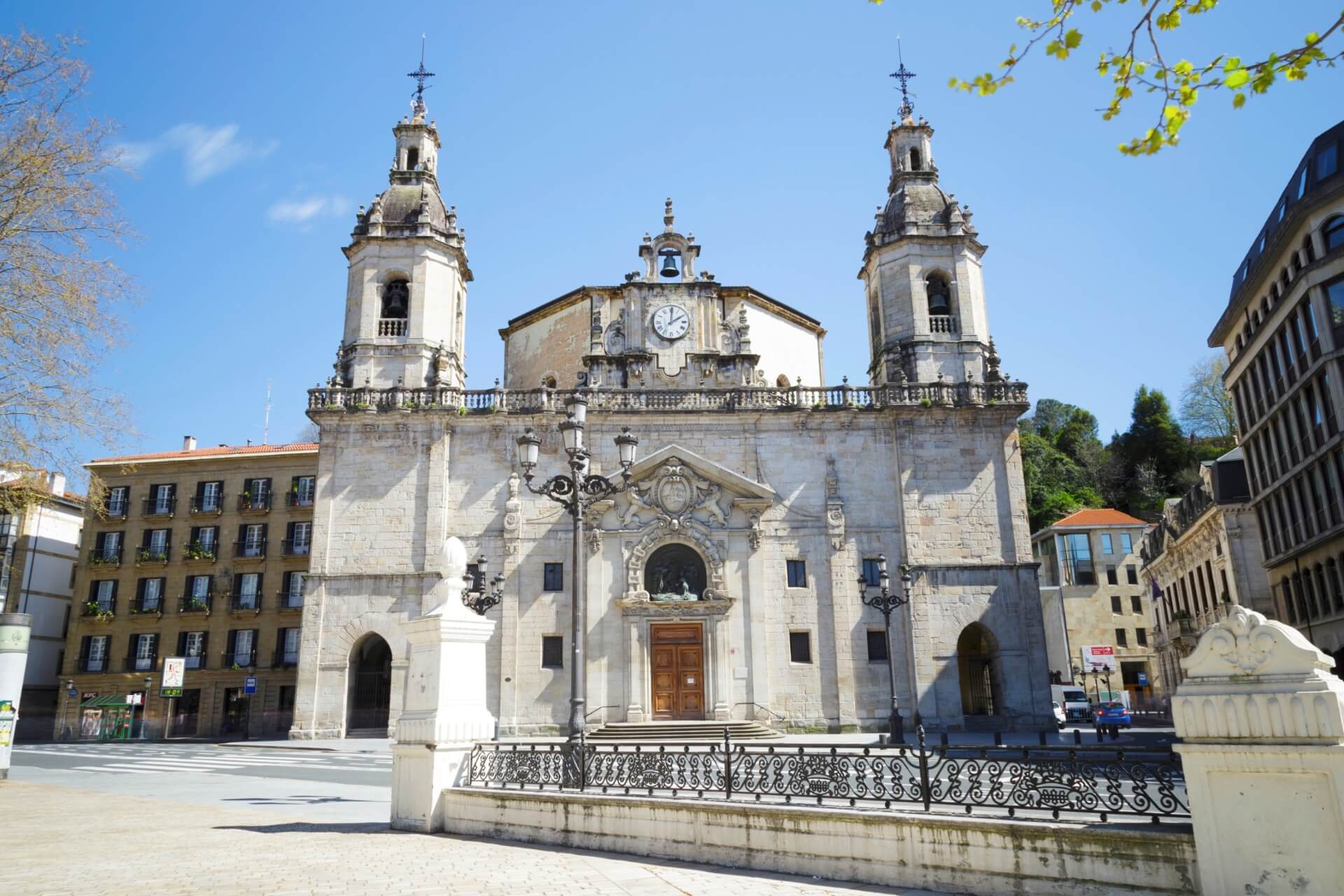
The church is located on the riverbank, which is very symbolic for a church dedicated to the heavenly patron of sailors and fishermen. The building’s construction is dated to the 16th century. It has not preserved its original appearance. The height of the plinth was significantly increased to protect the Basque shrine from floods. The architecture, layout, and interior decoration of the church fully comply with Baroque canons. The main relics of the church are statues of saints and a carved altar.
City Hall
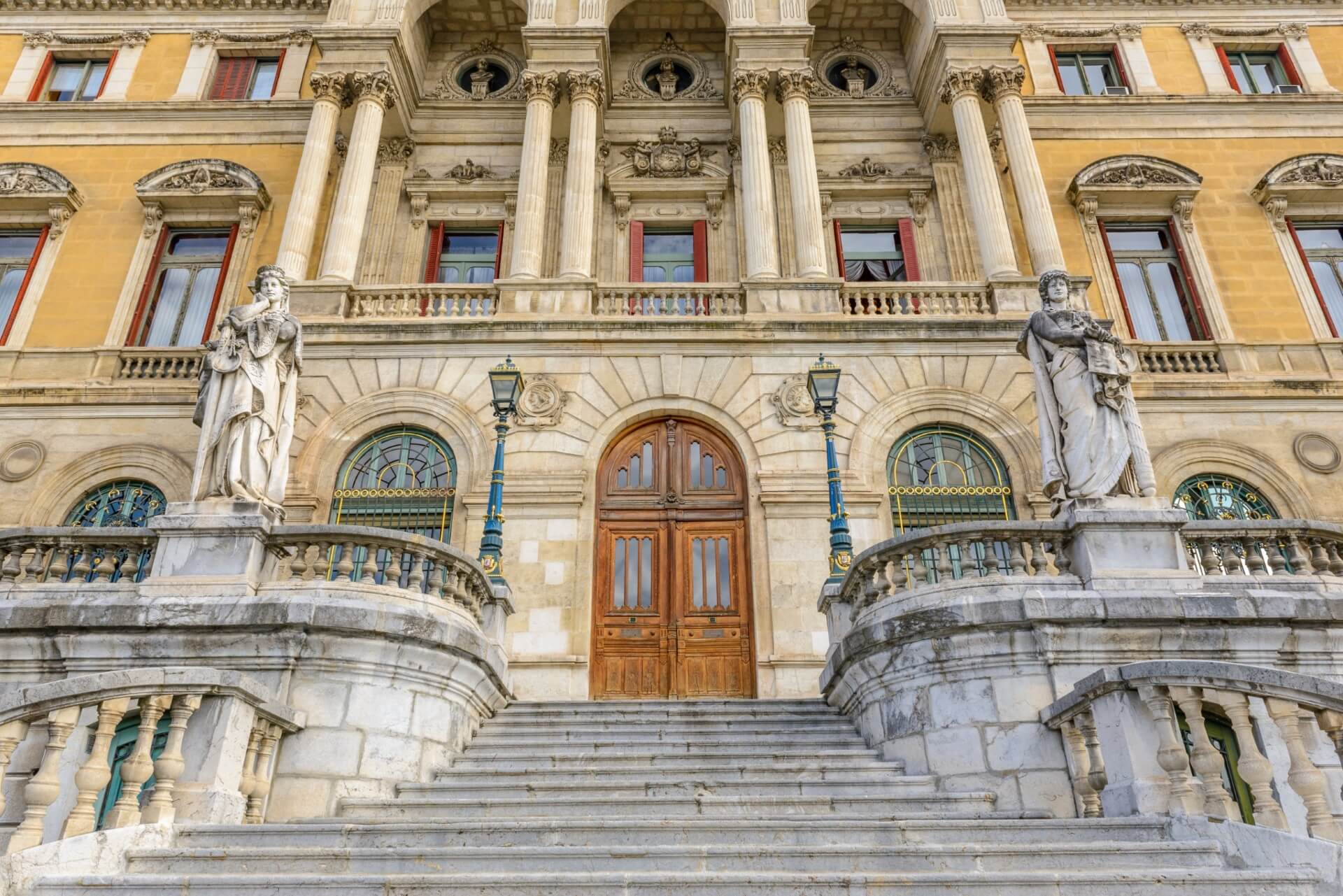
Among architectural monuments, many resemble royal palaces. City Hall can safely be attributed to such a group. Architects call it a model of European elegance and eclecticism. Strict forms, symmetry, arches, columns of different sizes and purposes, and balconies form a harmonious ensemble. The building was constructed at the end of the 19th century.
Concordia Railway Station
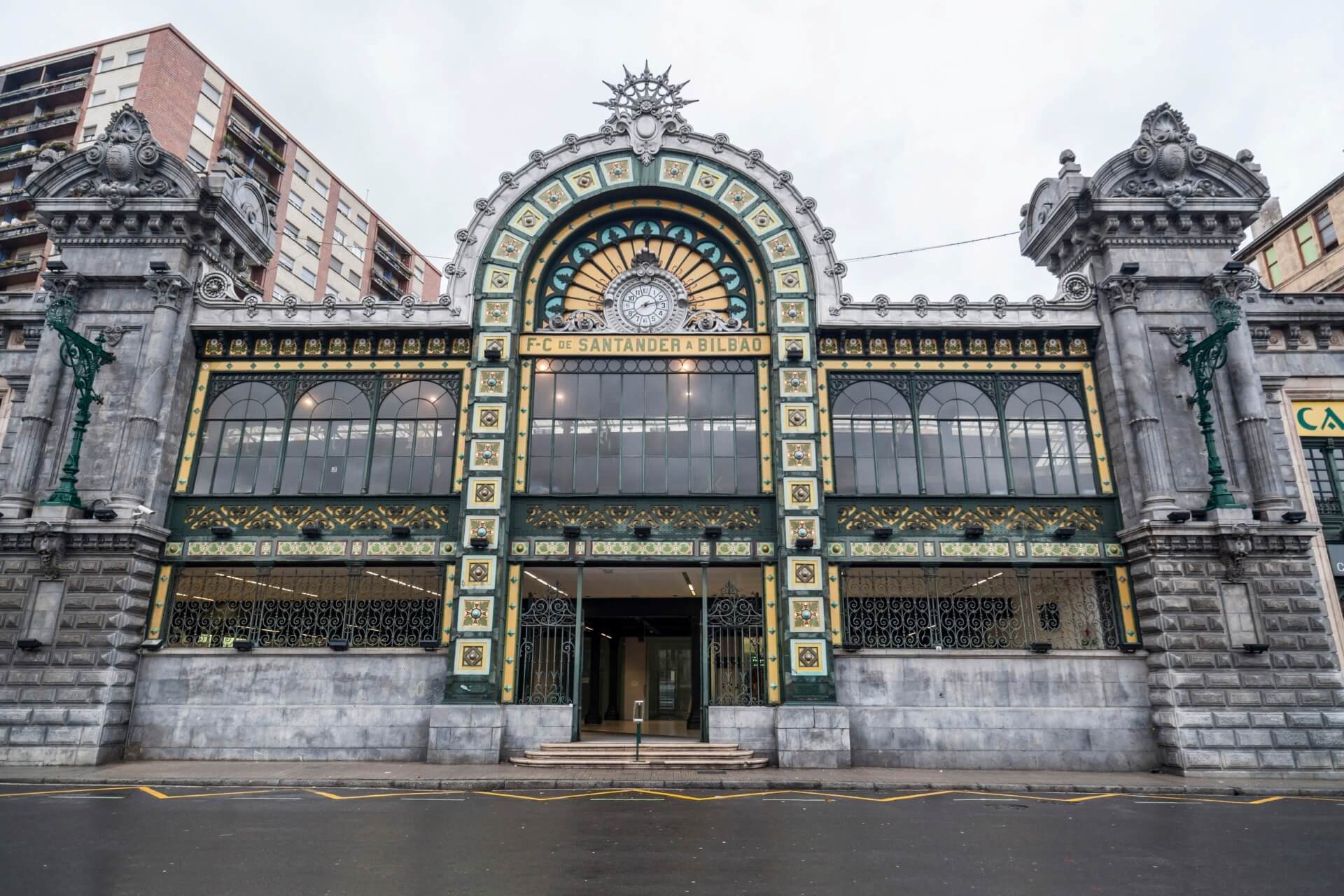
The station is located in the city’s central part. Such a location of large railway stations is a European urban planning tradition of the industrialization era. The modernist building, erected at the beginning of the 20th century, was a landmark of Bilbao for several decades.
Not far away is the Abando railway station, whose five-story building impresses with its scale, huge stained glass windows, modern infrastructure, and passenger traffic. However, the value of the still-functioning Concordia station lies elsewhere: architects and restorers managed to preserve the unique bright facade, clocks, colorful tiles, and hand-forged elements of the building.
Iberdrola Tower
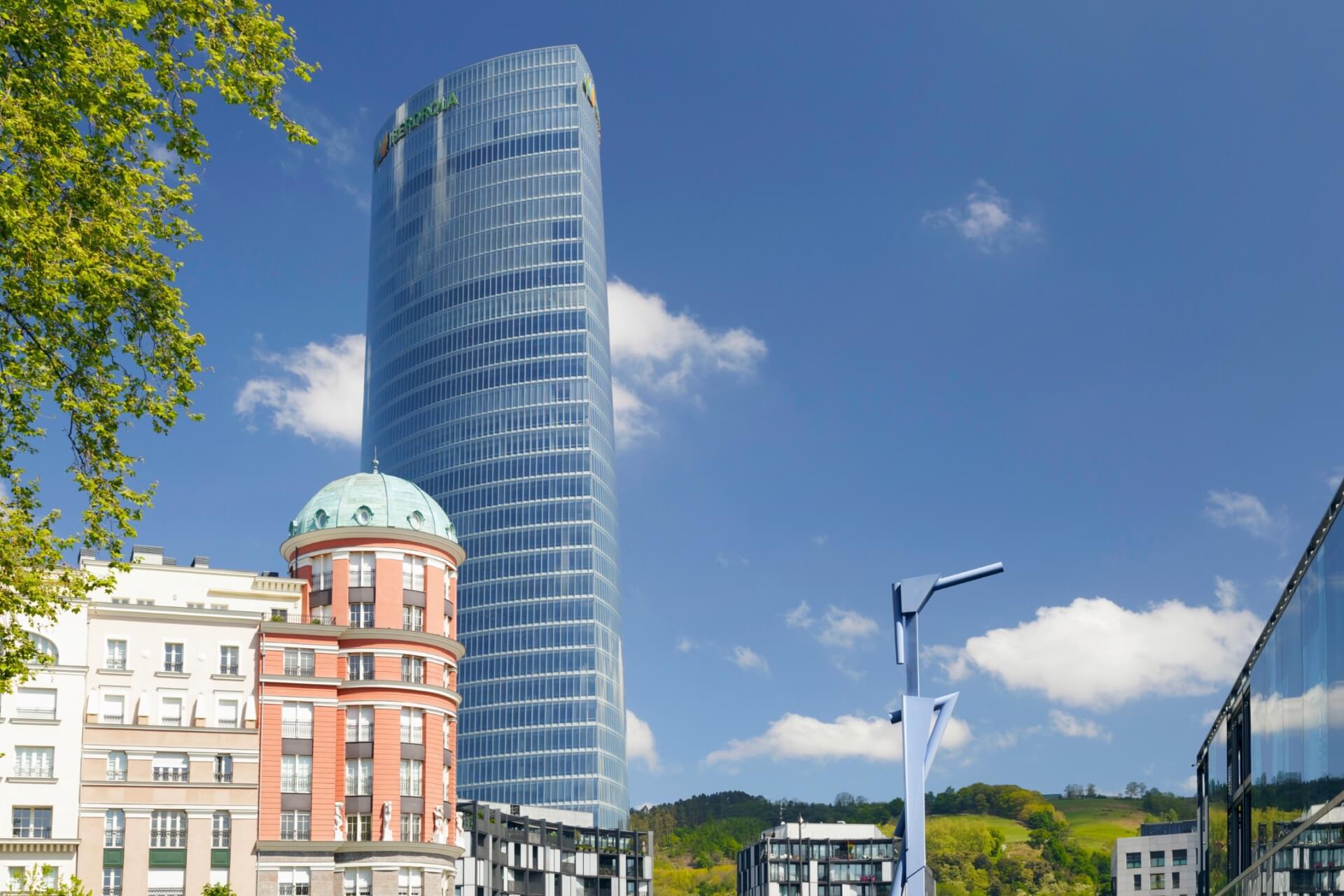
The skyscraper is named after its owner, one of the largest European companies. The 41-story tower stands out from similar structures with its eclectic design, harmoniously combining elements of high-tech and modern architecture. The architectural marvel is made of glass and concrete, and can simultaneously accommodate over 33,000 people.
The first three floors house cafes, restaurants, shops, exhibition and sports halls, medical and cosmetic offices, and rental premises. On the 25th floor, there is an observation deck offering a magnificent view of the port city at any time of the day. Construction of the skyscraper began in 2010 and was completed in record time: within two years.
The tower also serves as a cultural and leisure center. Iberdrola annually allocates funds to support the arts. On the first floor of the skyscraper, there is a permanent exhibition of works by well-known Basque sculptors and painters.
University of Deusto
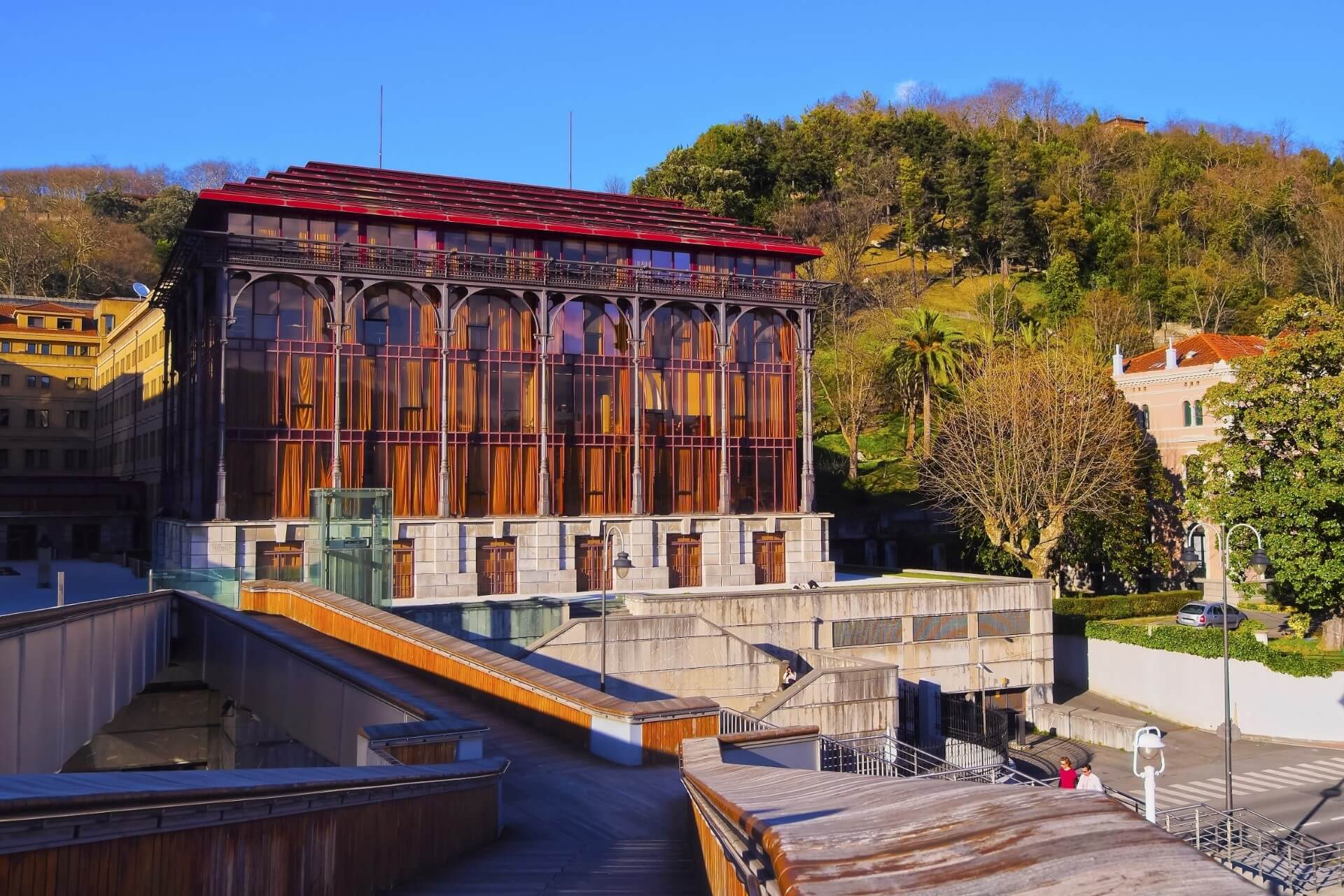
The university’s history dates back to the Jesuit university built near the Nervion River in the 19th century. Deusto graduates have significantly contributed to the region’s industrial development. One of the university’s two campuses is located in Bilbao, which has remained the most prestigious institution in Spain since its opening. The university is named after the Deusto district of the city. The first business school in the kingdom operated within this building.
During the Spanish Civil War, most universities were closed, including Deusto, which became a military base, hospital, and concentration camp by the early 1940s. Classes resumed during World War II, and the university’s management actively engaged students in research activities.
Today, over 200 universities worldwide collaborate with the Basque university. Deusto’s structure includes various institutes, colleges, and schools, including language schools. The university successfully combines innovative approaches with European scientific traditions. It was one of the first in the Old World to introduce a system of open distance education and student employment to help pay for housing.
The university serves as an educational and cultural center. One of the campus’s main attractions is the 10-story library built in the 21st century. The university is notable for its support and socialization of people with disabilities, ensuring access to education for citizens with limited mobility.
City Hall
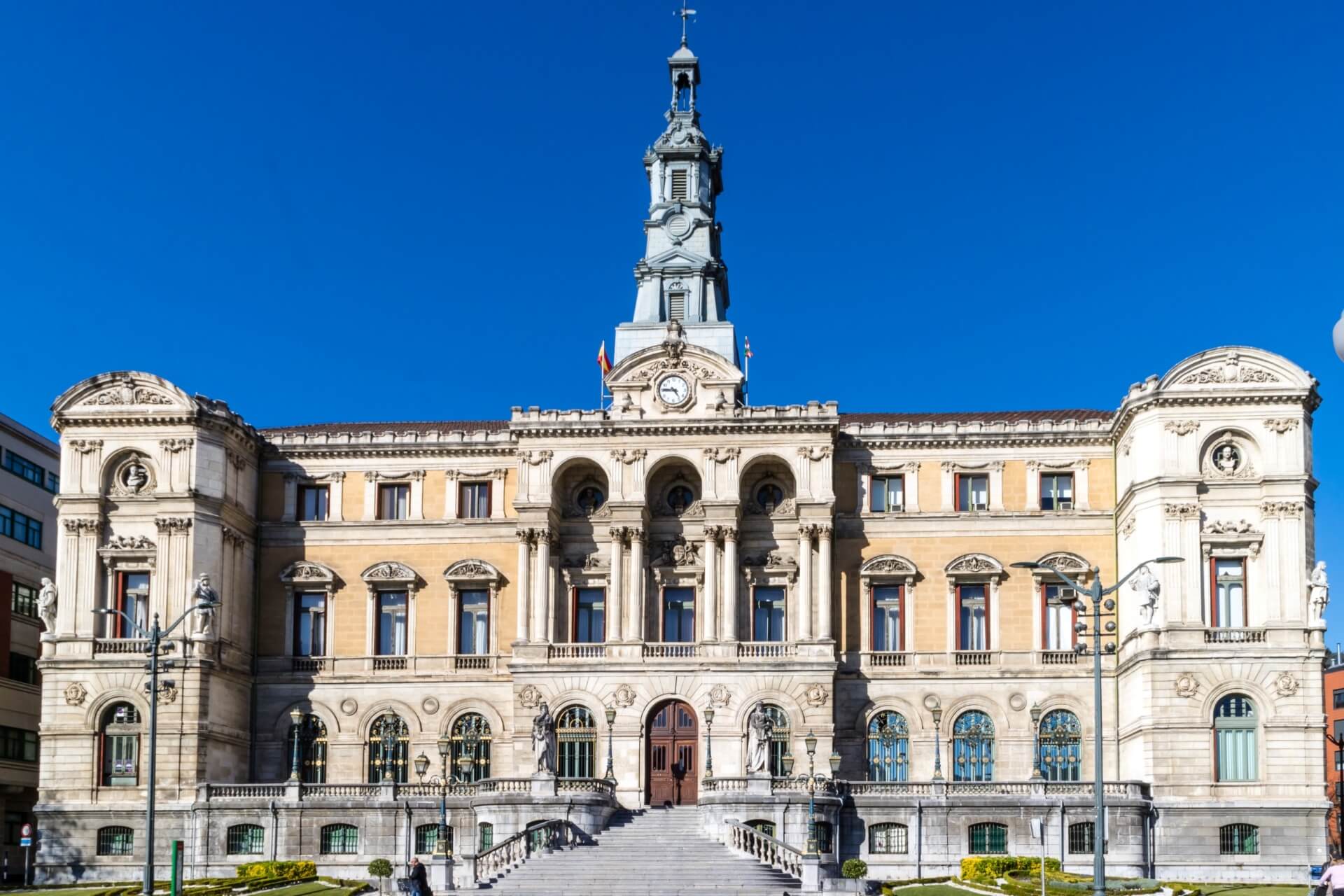
Its history begins in the 19th century. The building is located on the monastery grounds, forming a unified architectural ensemble with the monastery buildings. Due to military actions, part of the city hall was destroyed, damaging sculptures, elements of decor made using ancient technologies, the bell tower, and original interior items.
Restoration work partially rectified the situation. However, the city hall could no longer function fully as a government institution. The administration moved to a new building, and the old city hall’s premises are rented out by city authorities to companies, museums, restaurants, and private individuals.
The old city hall hosts exhibitions of Basque artists, concerts, and creative meetings. The most popular place is the famous Arab Hall, the venue for official receptions, award ceremonies, and wedding celebrations. As the Basques joke, “it’s booked years in advance.” There is some truth to this, as not everyone can rent the hall due to the busy schedule of public events.
Old Quarter “7 Streets”
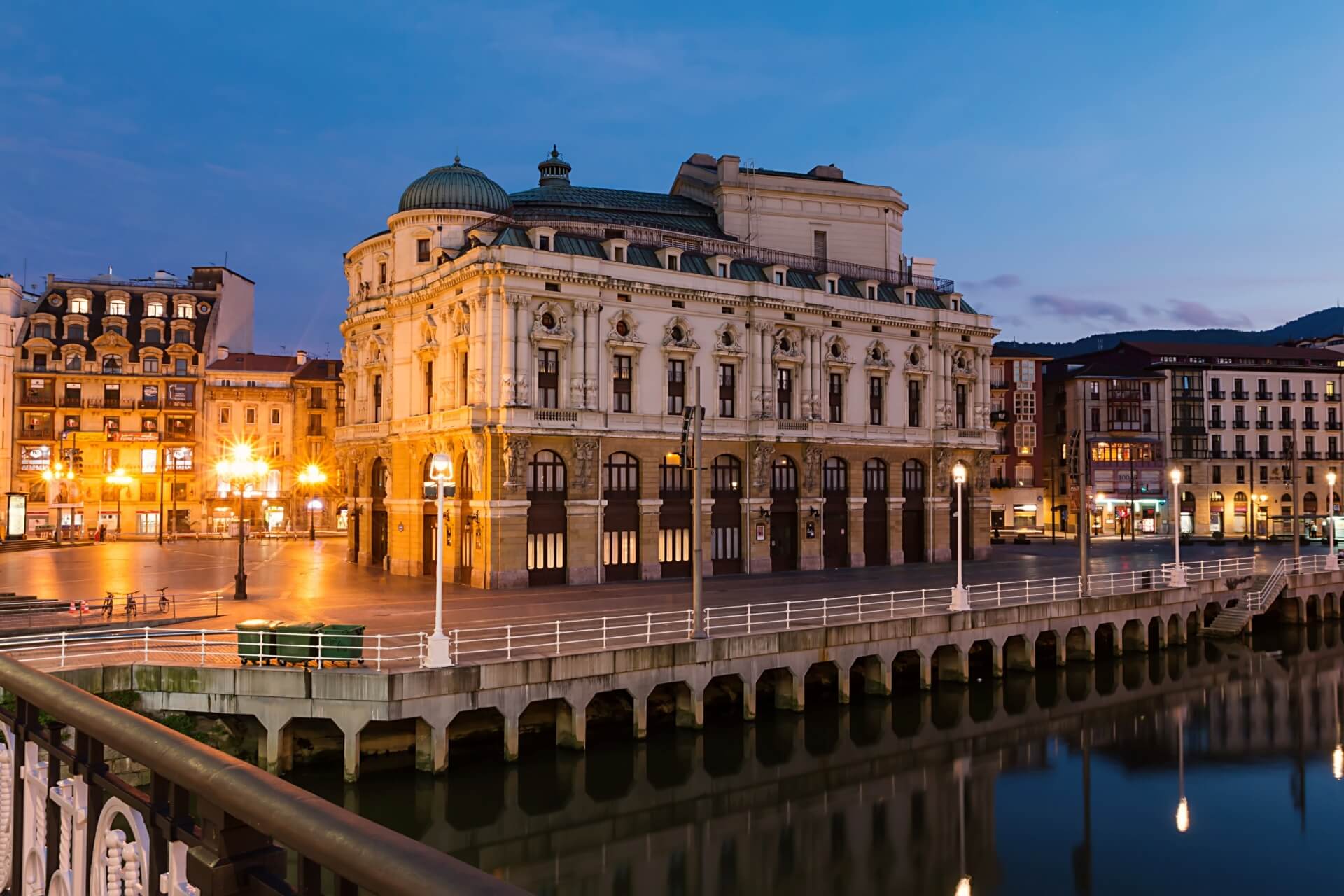
One of the most popular pedestrian areas appeared relatively recently, in 1979. The district where the old quarter is located has a history of more than seven centuries. It is often called magical, mystical, and mysterious. The Basques believe in the miraculous power of the number 7, which they think brings success to commercial ventures.
Logically, the pedestrian zone is a commercial center with an unparalleled historical atmosphere that attracts tourists from all over the world. The district started with three streets. Later, the fortress walls, which hindered its expansion, were demolished. Fragments of the oldest defensive structures have not survived, but historians believe that the locals used the rubble from the fortress walls for buildings on the other four streets of the quarter.
It is quite likely, as the Basques have always been known for their ingenuity, thriftiness, and practicality. The residents’ desire to use resources wisely and seek new development opportunities for Bilbao is probably rooted in their genes.

